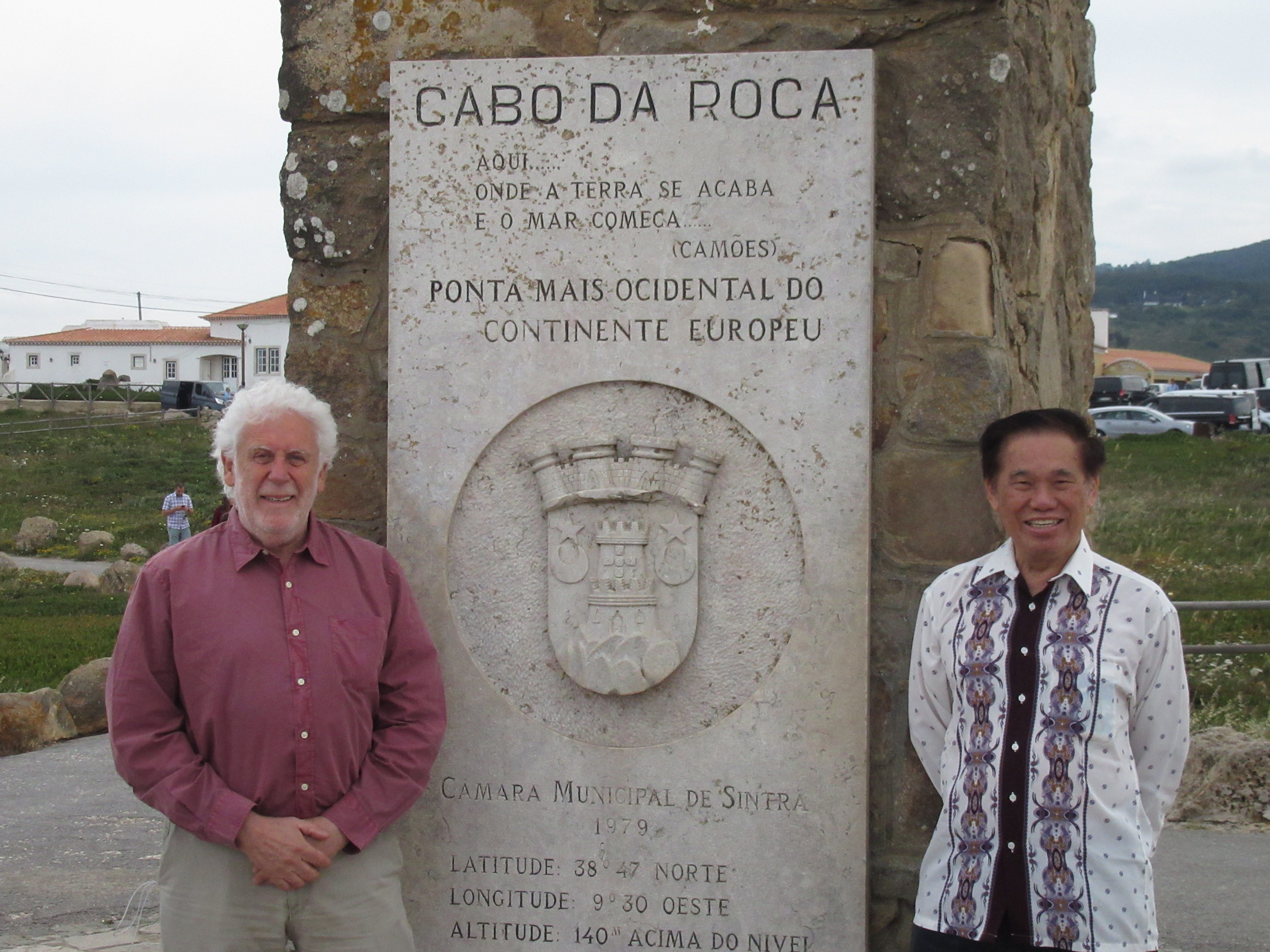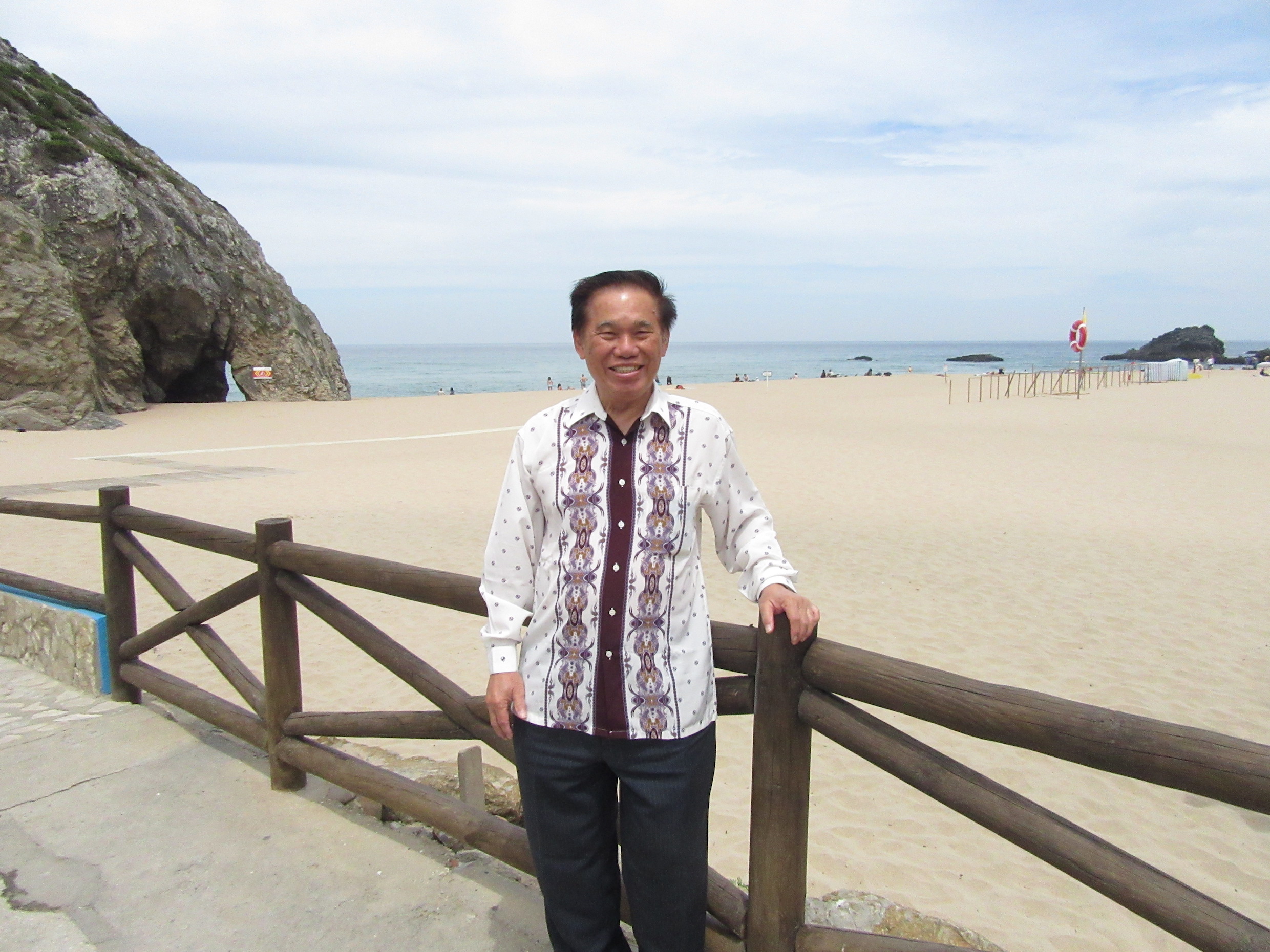CABO DA ROCA, THE WESTERNMOST POINT IN EUROPE 2018

Sifu Riccardlo Salvatore and Grandmaster Wong at Cabo da Roca
On 29th June 2018 Riccardo Salvatore and I visited Cabo da Roca, which is the westernmost point of Europe. I have been to this place before, with my wife as well as separately with my youngest son, Chun Yian, but it was in winter and there were not many people. But this time Riccardo and I visited this tourist attraction in summer, and there were a lot of people.
We set off at about 10.00 in the morning and went by the coastal route. We passed through some busy streets in Lisbon but I was quite surprised that the roads were quite free of traffic. We went past a huge aqueduct, which the Romans left as a souvenir. I remember that many years ago when I first visited Lisbon, I thought the road would lead out of Lisbon, but I discovered quite interestingly that actually it led to the centre of the city.
Soon we saw the famous Portugal Bridge, which is called Ponte 25 de Abril, named after the Carnation Revolution in 1974 which overthrew an authoritarian regime. The bridge spanned over the Tagus River, which ran across the Portuguese capital, and it looks similar to the Golden Gate Bridge in San Francisco. It is a suspension bridge, with six lanes for cars on the upper deck and two train tracks below. It was majestic seeing the bridge in the air.
We went along a popular road besides the river. We saw the Discoveries Monument, where I bought my wife many years ago, with a huge map on the ground showing Portuguese colonies. We also saw Belem Tower and Jeronimos Monastery, both are UNESCO World Heritage Sites. Further down the road was a museum where Riccardo brought me there a few years ago.
We passed though some impressive buildings and small towns on the way. Soon we arrived at Cascais. I specially looked out for the lovely hotel where my wife and I spent an enchanting night some years ago, with payment of the hotel room by Riccardo’s generosity. We went past the exquisite seaside with pretty boats at the embankment. Then we went through a sandy road by the ocean which I could easily recognize.
After going through some bushy land we came to Coba da Roca. I have been to this place several times which was quite deserted then. In fact I wondered why such an important place where Europe ends at its most western point before the Atlantic Ocean, was not much popularized. But now I had the answer. Being summer time, there were a lot of tourists from all over the world. We were fortunate to have “sifu’s luck”, and found a parking space for our car right at the start of the parking lot.
Even the vegetation was luxuriant. I remember that many years ago when I visited the place in winter, the long grass on both sides of the road was withered. But now the grass was in full bosom, with beautiful flowers. I was quite impressed with a grassy stretch near the car park from a tall cross at the westernmost edge of Europe just before the Atlantic Ocean. I told Riccardo that if one swam far enough, he would reach America on the other side. As there were so many people, we had to line up to have photographs taken at the huge cross commemorating the place.
After spending some time at the westernmost part of Europe, we left the place for Sintra. In my world travels, I have been to countless cities and towns, but Sintra has a special place in my heart. I singularly remember Sintra with its narrow roads and romantic buildings, like an old castle on top of a hill. The narrow roads soon appeared, with high walls on both sides. There was, however, a beautiful, wide walkway with trees and a deep valley beyond a fence which enabled me to remember Sintra very well.
Soon the Sintra Palace with its two huge chimneys came into view. There were of course a lot of people. But the road leading to Sintra town was close and we were redirected to other passageways. I recalled a splendid hotel which Riccardo took me there a few years ago with lovely gardens and stately buildings. It was, I believe, the former Seteais Palace.
But as I have been to Sintra many times, it was not a great miss. Moreover it was about lunch time, and I thought of the very delicious Portuguese food.
We went to a charming restaurant at Plaia Algarda, or Algarda Beach. The beach was wide and beautiful, with clear sky and the tempting ocean. Although we were relatively early, by Portuguese standard, and only one or two tables were occupied, the restaurant was already fully booked. But, surprisingly, a waiter or the owner of the restaurant, could recognize me, as I had been to the restaurant once a few years before, or perhaps twice, and he managed to get Riccardo and me a table.
While waiting for our main dishes to come, we asked him why the beach was called Algarda. He told us that in the past the Arabic word “algarda” meant “turtles”. Turtles used to come to the beach, after swimming miles and miles in the Atlantic Ocean.
I told Riccardo that many, many years ago when I was first posted to Dungun in Malaysia as a school teacher, two other teachers and I camped a night in the open at Rantau Abang, which means “Brother Beach” in Malay, facing the South China Sea about 10 miles from Dungun town. In the middle of the night, a small Malay boy whom we earlier paid, woke us up to see a gigantic turtle coming ashore to lay eggs. The gigantic turtle was the size of a small car, and it laid hundreds of eggs in the sand before disappearing into the sea.
We left Praia Algarda to return to Lisbon by a land route. I recalled that more than 20 years ago the land route to Sintra was a winding, narrow road, but now it was a wide highway with buildings all the way.
Wong Kiew Kit
30th June 2018
Lisbon

Grandmaster Wong at Praia Algarda
LINKS
Video Shows in Portugal
